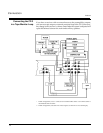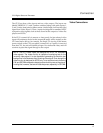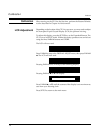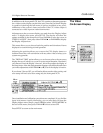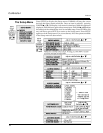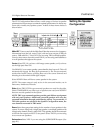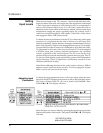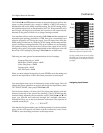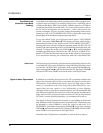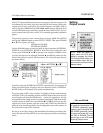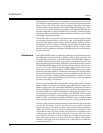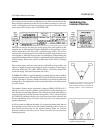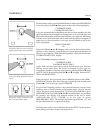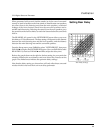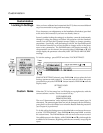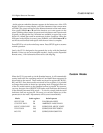
24
Lexicon
Calibration
Auto-Mode Load
(Automatic Input Mode
Loading)
Auto-Mode Load determines which operating mode will be engaged when
a specific input is selected. For example, the input for a video disc player
would load the Home THX Cinema mode, while the input for a CD player
would load the Music Surround mode. Any of the preset modes or any of
the CP-3's 30 User Registers can be selected — or the current mode can
remain unchanged. You can, of course, change the operating mode you are
listening to, but if AUTO MODE LOAD is ON, pressing the same input
button again will reload the assigned operating mode.
To set Auto-Mode Load, go to the Input menu, select "AUTO MODE
LOAD", then press PARAM ▲ or ▼. The display will show which mode is
automatically loaded. If the display reads "AUTO MODE LOAD OFF",
selecting this input will not change the operating mode and the CP-3 will
remain in the same operating mode it was in before this particular input was
selected. To change the mode, press PARAM ▲ or ▼ to scroll through the
available operating modes. The choices are: OFF, Presets 1-15, Bank A 1-15,
Bank B 1-15. Since the Standard remote uses modes stored in User Register
B, we recommend selecting one of these five modes for Auto-Mode Load.
The Input Auto-Level function (see discussion under Setting Input Levels)
is normally ON. This can be defeated by using PARAM to move the cursor
to select the "AUTO LEVEL" parameter, then pressing PARAM ▼ twice.
Now, pressing PARAM ▲ will turn this function ON, pressing PARAM ▼
will turn it OFF. Press STORE to save and return to the Input menu.
In addition to controlling the input level, the CP-3 constantly monitors and
adjusts the internal signal levels to maximize the signal-to-noise ratio.
Theoretically, if the manual input level is set far too high, and you have
music or a soundtrack with a very long soft section followed by, say a
cannon shot, this may result in a few milliseconds of input clipping.
Although we have yet to find a musical selection or a film soundtrack that
does this (and, hopefully, the input level will not be grossly misadjusted to
begin with) we have provided a control so that you can turn this function
off. Under normal operating situations, we recommend it be left on.
The Signal-to-Noise Optimization function is not available in the Reverb
and Ambience modes. In other modes it is normally ON. This function can
be defeated by using PARAM to move the cursor to select the "S/N
OPTIMIZER" parameter, then pressing PARAM ▼ twice. Now, pressing
PARAM ▲ will turn this function ON, pressing PARAM ▼ will turn it OFF.
Press STORE to save and return to the Input menu.
Note that the S/N Optimizer is selectable for each of the four inputs.
Auto-Level
Signal-to-Noise Optimization



